
During the year-end holiday, Jannice, a tourist from Guangdong, China, chose Vietnam as her destination, stopping in Ho Chi Minh City before flying to Phu Quoc. She was impressed by the friendliness of the people and loved the local cuisine , from pho to straws made from water spinach.
Meanwhile, Minji’s family stayed in Phu Quoc for 4 nights, visiting the safari, strolling the night market and enjoying street food. It was their first time in Vietnam and they were captivated by the beautiful scenery, culture, cuisine and the friendliness of the people and hoped to return to explore Hanoi or Da Nang.
| INTERNATIONAL VISITORS TO VIETNAM IN THE PAST 10 MONTHS | |||||||||||
| Source: Vietnam National Administration of Tourism | |||||||||||
| Label | January | February | March | April | May | June | July | August | September | October | |
| Million views | 2.07 | 1,894 | 2,054 | 1,655 | 1,528 | 1,463 | 1,563 | 1,685 | 1,523 | 1,733 | |
Where do foreign guests go?
Jannice and Minji are among the more than 17 million international visitors to Vietnam in the past 10 months. Of these, China and South Korea continue to be the two largest markets sending visitors.
"Chinese tourists have increased sharply in both quantity and flight frequency, while Korean tourists have maintained a stable growth rate," said Ms. Tran Thi Bao Thu, Marketing and Communications Director of Vietluxtour Travel Company.
According to Ms. Thu, while Chinese tourists focus on resort routes such as Nha Trang, Da Nang, Phu Quoc and big cities such as Hanoi and Ho Chi Minh City, Korean tourists have more diverse needs, from beach resorts, golf to MICE tours (seminars - conferences), family travel and honeymoons.
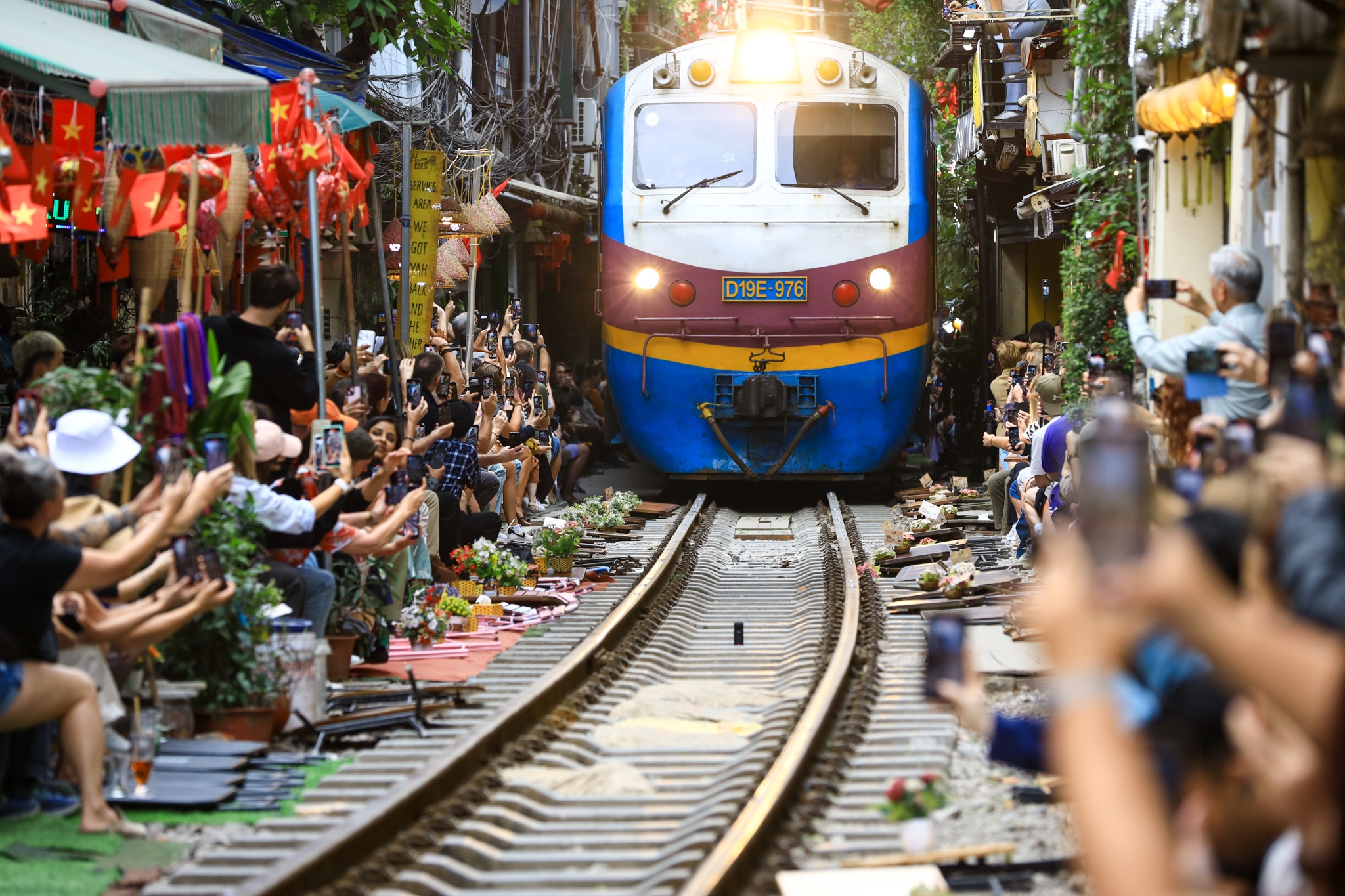   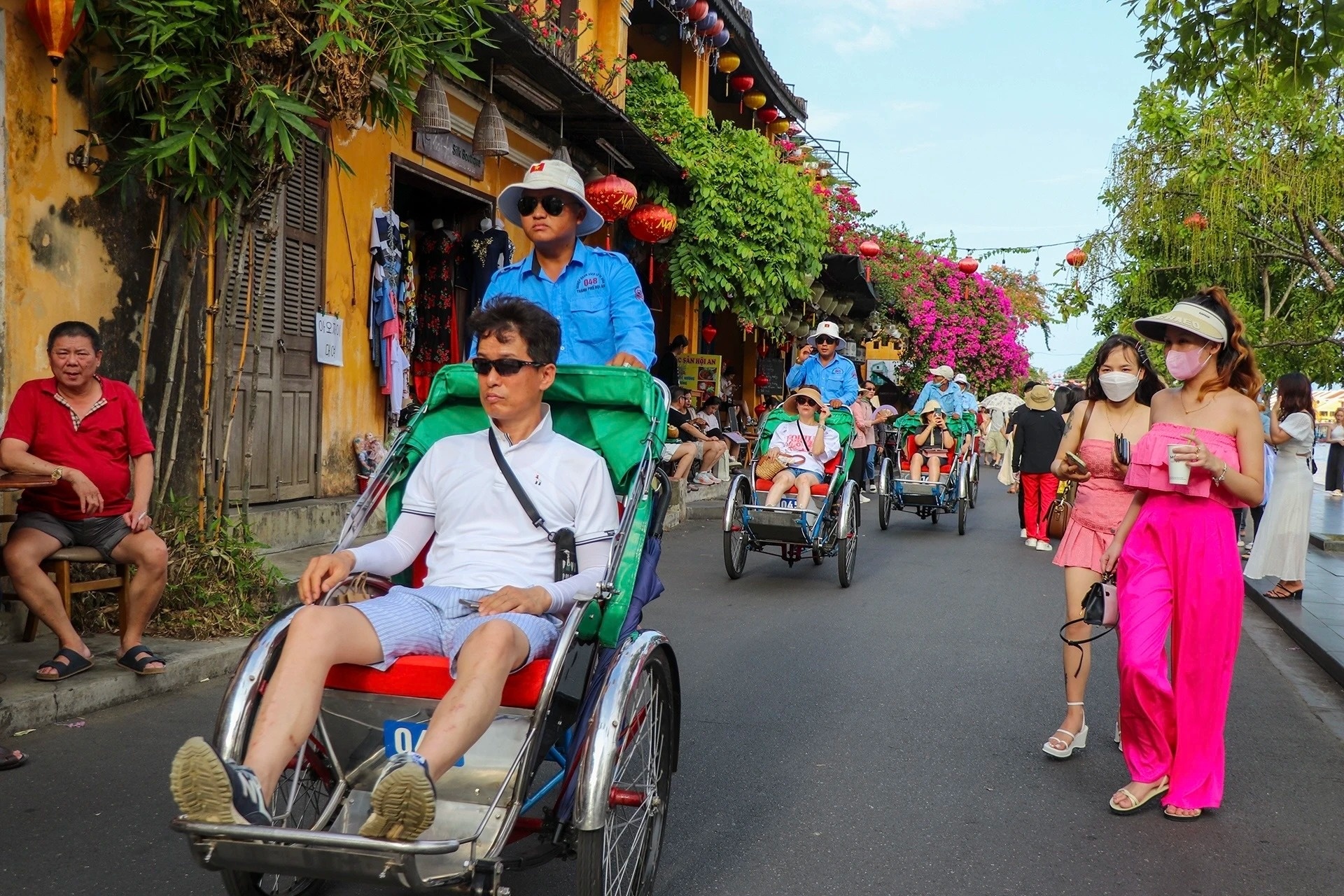 |
Hanoi, Ho Chi Minh City, Phu Quoc, and Hoi An are still traditional destinations for Western tourists. Photo: Tran Hien, Linh Huynh, Tuong Vi, and Pham Thang. |
This unit sees two distinct tourism trends emerging among international visitors. The first is returning to familiar destinations such as Hanoi, Ha Long, Sa Pa, Hue - Da Nang - Hoi An or Phu Quoc, but with upgraded experiences such as sleeping overnight on the bay, trekking, learning to cook or cycling in the countryside.
The second is to explore new destinations such as Ha Giang, Moc Chau, Ta Xua, Quy Nhon, Phu Yen or the West, where tourists seek pristine landscapes, indigenous culture and local life.
"International tourists are shifting from the need to 'travel for knowledge' to 'travel for deep experience'. Destinations with their own stories, cultural identities and preserving local lifestyles will have a big advantage in the coming time," said Ms. Thu.
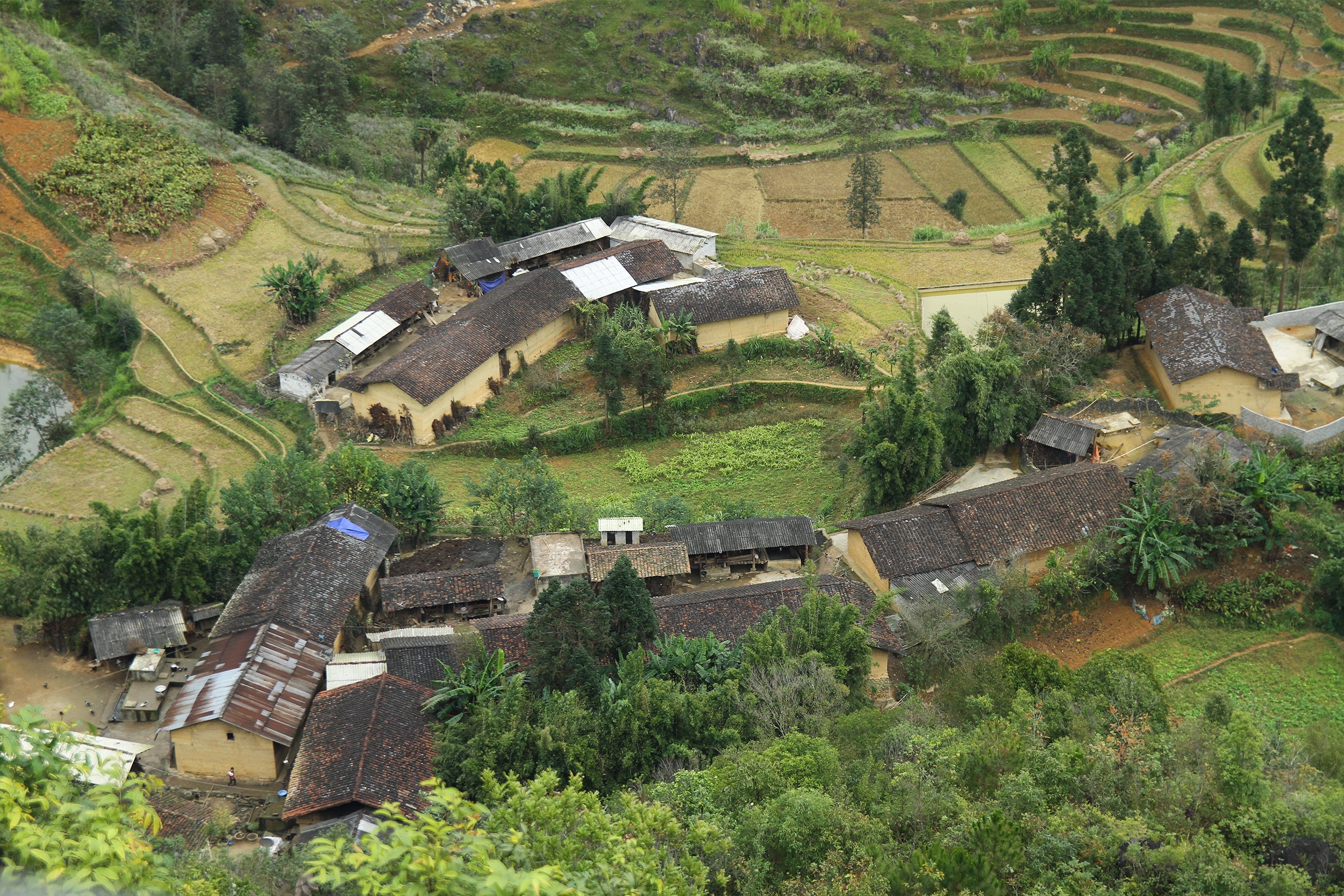   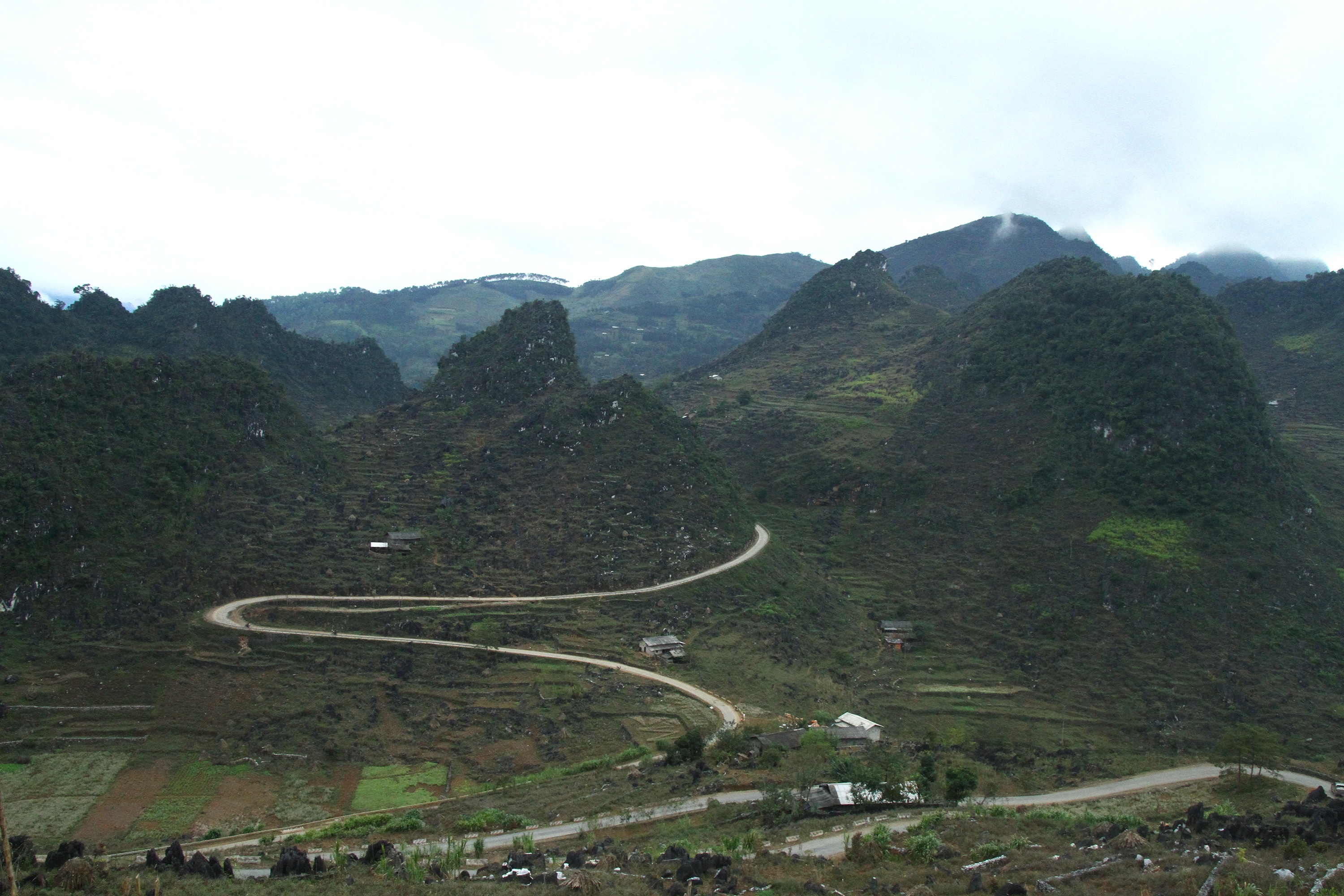 |
Tourists explore the dangerous roads in Ha Giang. Photo: Chau Sa. |
Foreign guests have changed
Dr. Duong Duc Minh, Deputy Director of the Institute for Economic and Tourism Development Research, said that after the pandemic, international visitors to Vietnam have clearly changed in terms of destinations, spending and service needs.
In terms of destinations , the Northeast Asian tourist market, especially from Korea, China and Japan, increasingly favors central coastal localities such as Nha Trang, Da Nang, Ha Long and Phu Quoc.
South Korea leads the way thanks to direct flights and diverse resort services. Meanwhile, Ho Chi Minh City and Hanoi remain the hubs for MICE, short-term tourism and domestic connections, demonstrating the flexibility of the international market in Vietnam.
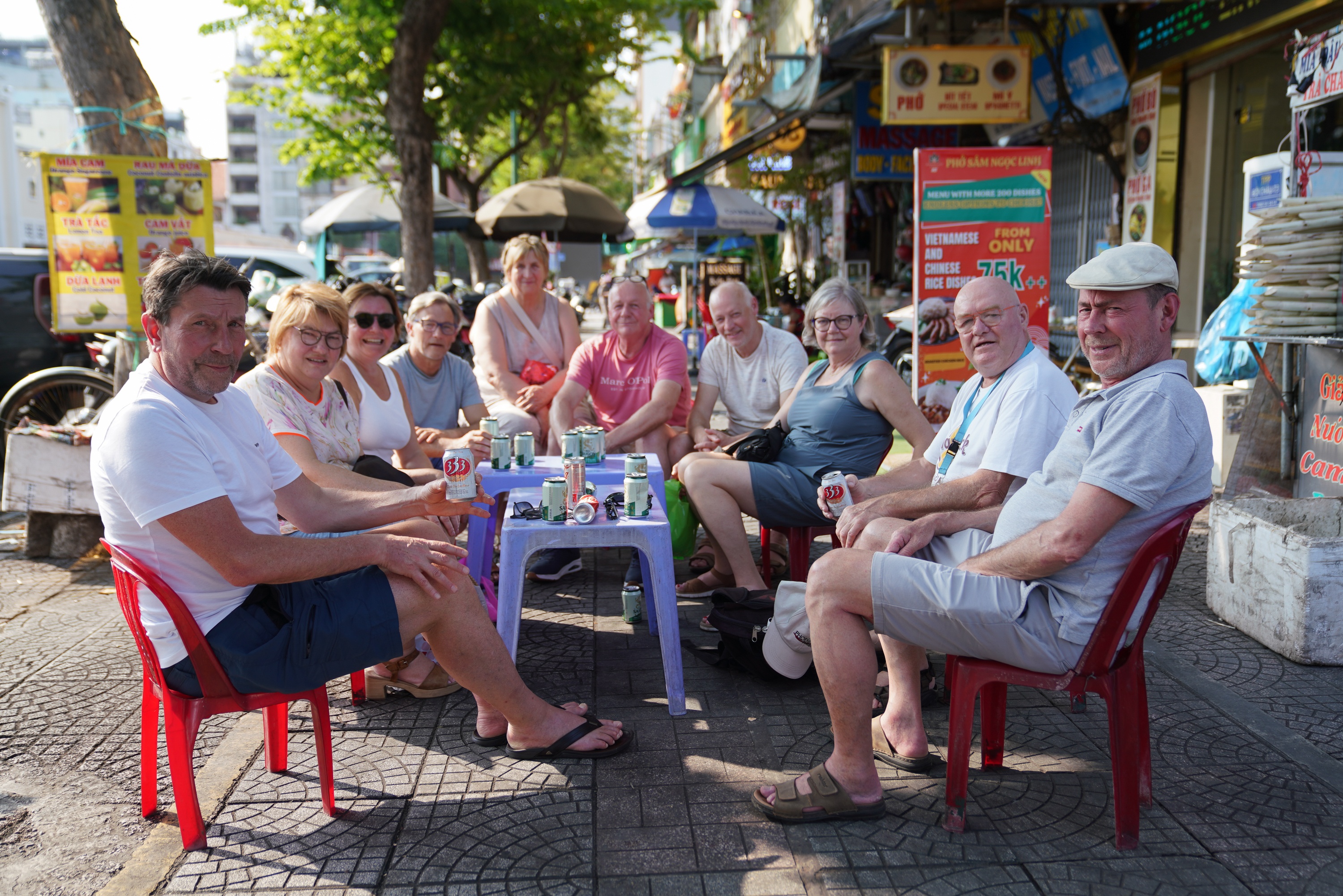 |
A group of Belgian tourists drink beer on the sidewalk in Ho Chi Minh City. Photo: Linh Huynh. |
In terms of service needs, international visitors prioritize destinations with open spaces, less crowded, focus on hygiene and safety factors and are willing to pay for "meaningful" experiences. The digitalization trend also makes them book services online, flexible with their schedules and prioritize personalized experiences.
Foreign visitors to Vietnam still spend less than in Thailand
In terms of spending , according to Dr. Duong Duc Minh, tourists now spend more on experiences instead of just accommodation, with their budgets focused on cuisine, exploration, health care and outdoor activities.
Although average spending has not exceeded 2019 levels, the recovery is rapid and is expected to return this year.
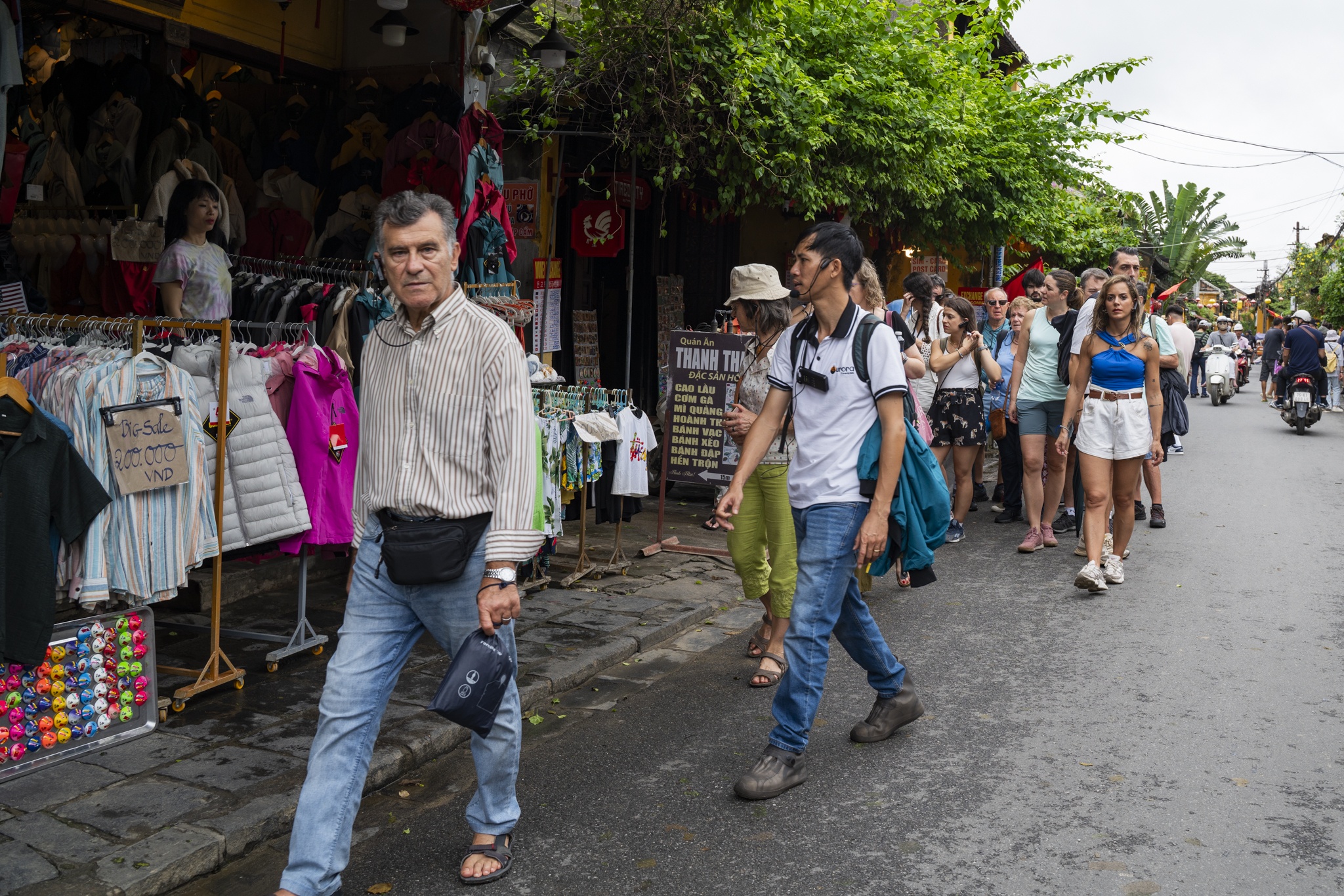   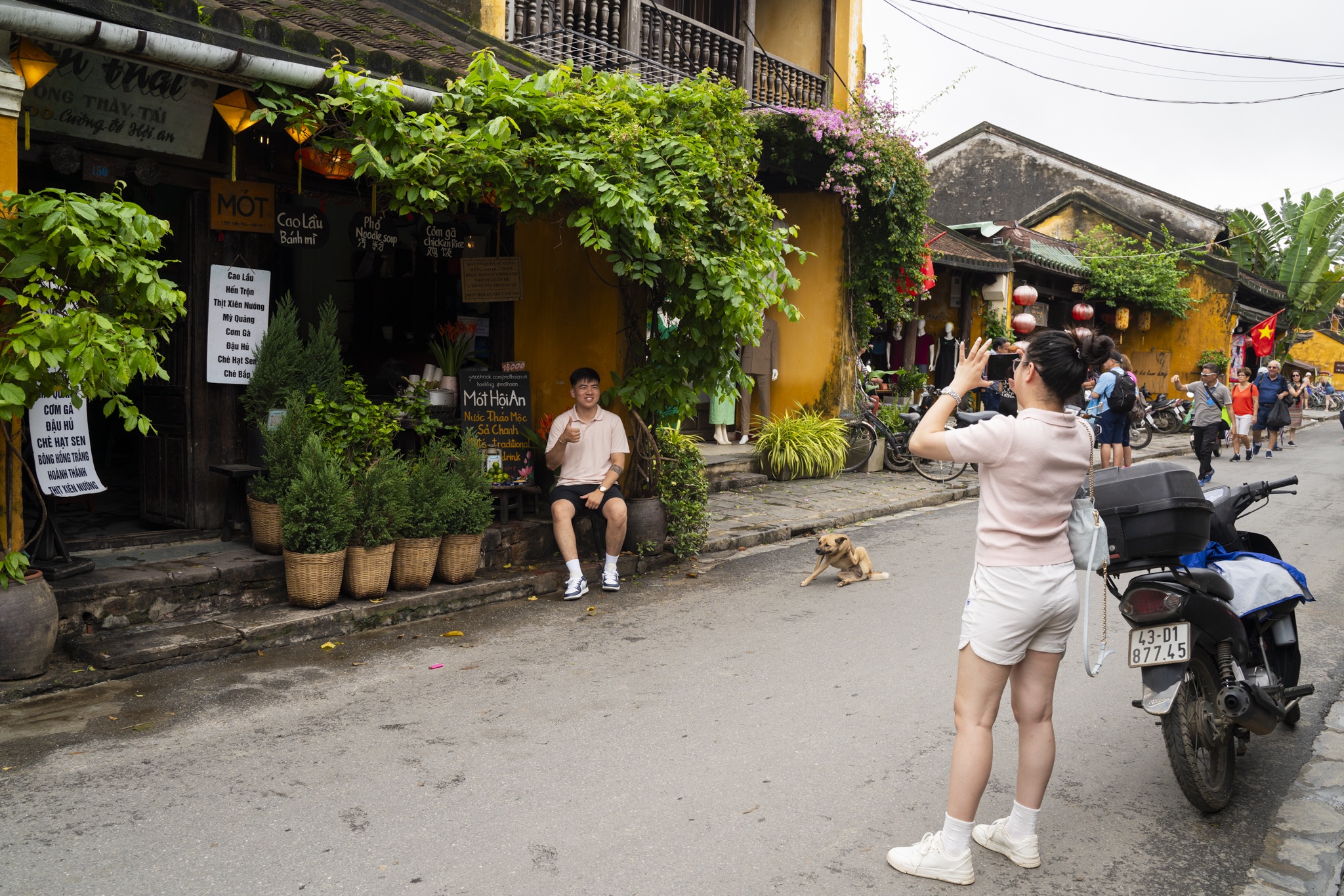 |
International tourists return to Hoi An after the historic flood in late October. Photo: Pham Phung. |
Specifically, the average spending of international visitors to Vietnam in 2024 will reach about 29.2 million VND/visitor, higher than Malaysia (16 million VND/visitor) but still lower than Thailand (about 40 million VND/visitor).
This figure is based on a general calculation: total international tourism spending divided by the total number of inbound visitors (foreigners coming to Vietnam), reflecting the economic value that each visitor brings.
The difference of 10-11 million VND/person between Vietnam and Thailand comes from 3 main reasons:
- The length of stay in Vietnam is short (5-6 nights compared to 9-10 nights in Thailand)
- Spending intensity on entertainment, shows, health care and shopping is not high.
- No basic-signature-flagship product packages that can trigger higher spending have been formed
Experts emphasize that the realistic way for Vietnam to get closer to Thailand is to increase the value of each visitor by extending the length of stay, standardizing product tiers and optimizing the paid experience. The short-term goal is to increase the average spending to 30-35 million VND per visitor, aiming for regional balance in the medium term.
 |
American tourists explore Ben Nghe Street Food area (HCMC). Photo: Linh Huynh. |
Meanwhile, Vietluxtour said the business analyzes spending by customer segment instead of calculating the average.
Chinese tourists account for a large number in the resort-shopping group. Although their personal spending is lower than that of Korean or European-American tourists, total revenue is still high thanks to the scale and added services.
Recently, the group of middle- and high-end Chinese tourists has increased rapidly, traveling in small groups or with families, favoring golf, wellness and luxury resorts, with spending levels equal to those of Korean and Japanese tourists.
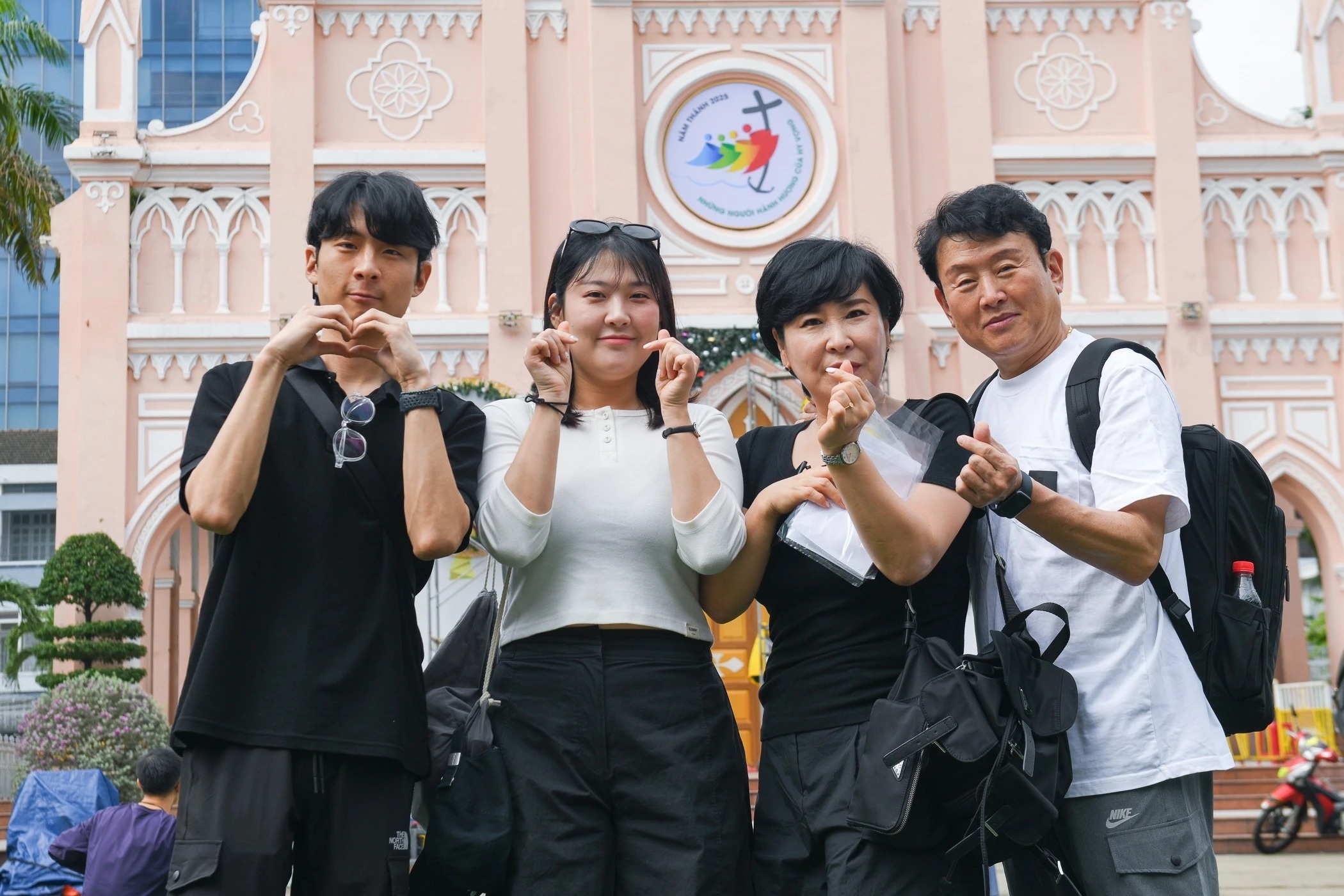 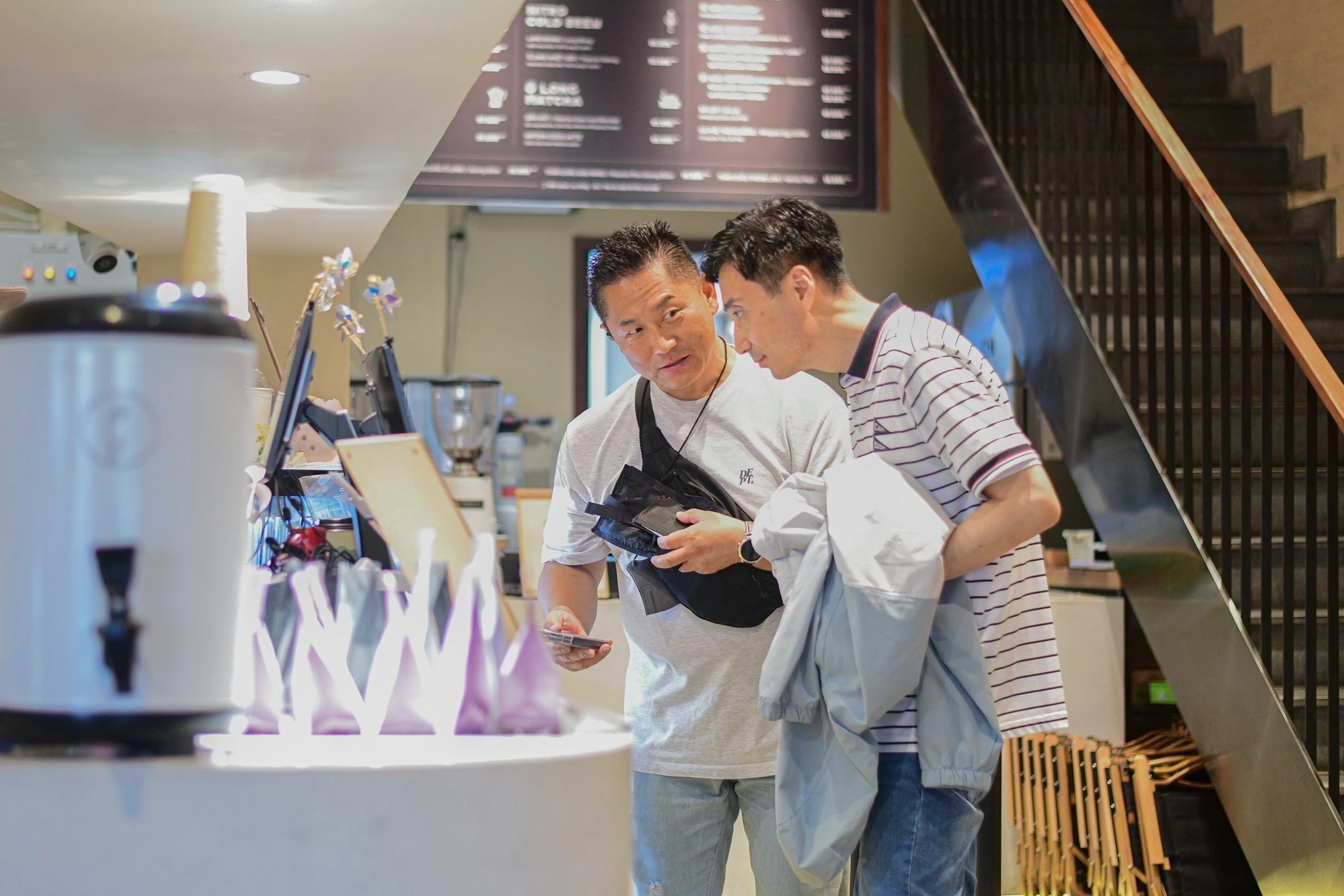  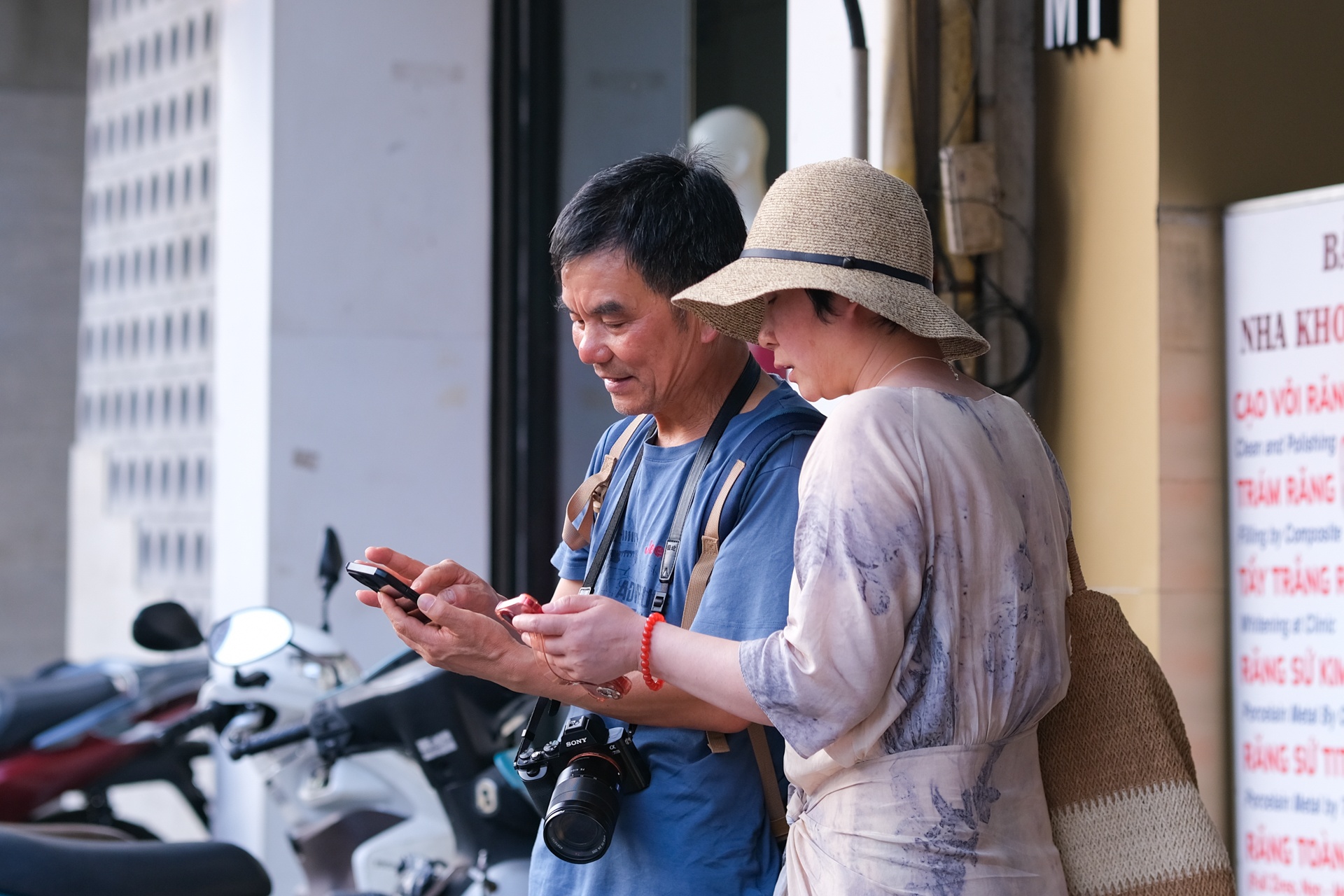 |
Groups of Chinese and Korean tourists having fun in Da Nang and Ho Chi Minh City in 2024. Photo: Linh Huynh. |
Korean and Japanese customers spend a stable amount of money, at a fairly high level, and are willing to pay more for hotels, cuisine, and high-end services such as golf, spas, or cultural shows, as long as they are committed and professional.
European, American and Australian tourists often stay longer, spend more on experiences, travel and outdoor activities, and especially value culture, nature and sustainability.
In the Chinese market, spending depends on the segment: the mass group may be low, but middle- and high-end customers spend heavily, especially on resorts, golf and wellness.
"We proactively exploit the mid- to high-end Chinese customer segment along with Korean, Japanese, European and American customers to optimize both quantity and quality," said Ms. Thu.
Source: https://znews.vn/khach-ngoai-dang-o-dau-post1602505.html




![[Photo] Special class in Tra Linh](https://vphoto.vietnam.vn/thumb/1200x675/vietnam/resource/IMAGE/2025/11/14/1763078485441_ndo_br_lop-hoc-7-jpg.webp)
![[Photo] Unique architecture of the deepest metro station in France](https://vphoto.vietnam.vn/thumb/1200x675/vietnam/resource/IMAGE/2025/11/14/1763107592365_ga-sau-nhat-nuoc-phap-duy-1-6403-jpg.webp)

![[Photo] Unique art of painting Tuong masks](https://vphoto.vietnam.vn/thumb/1200x675/vietnam/resource/IMAGE/2025/11/14/1763094089301_ndo_br_1-jpg.webp)






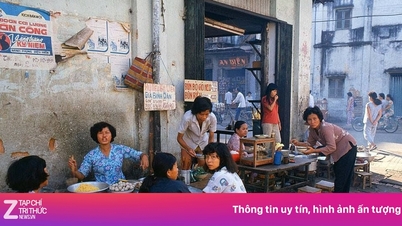
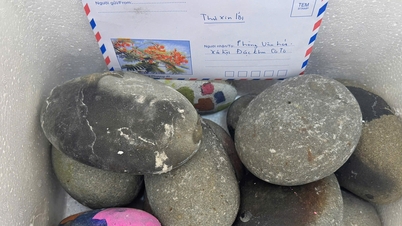










![[Photo] Deep sea sand deposits, ancient wooden ship An Bang faces the risk of being buried again](https://vphoto.vietnam.vn/thumb/1200x675/vietnam/resource/IMAGE/2025/11/13/1763033175715_ndo_br_thuyen-1-jpg.webp)






































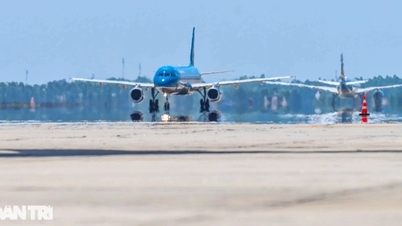


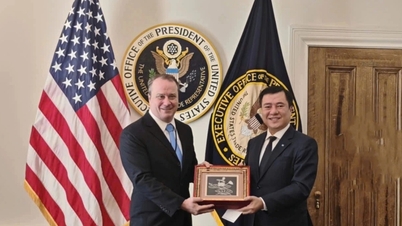

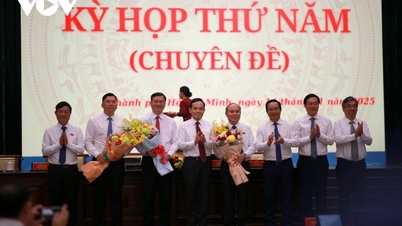
















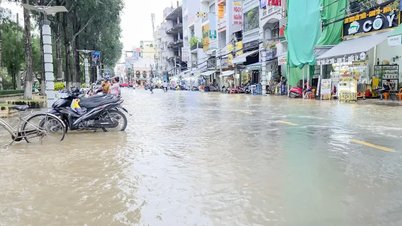









![Dong Nai OCOP transition: [Article 3] Linking tourism with OCOP product consumption](https://vphoto.vietnam.vn/thumb/402x226/vietnam/resource/IMAGE/2025/11/10/1762739199309_1324-2740-7_n-162543_981.jpeg)





Comment (0)